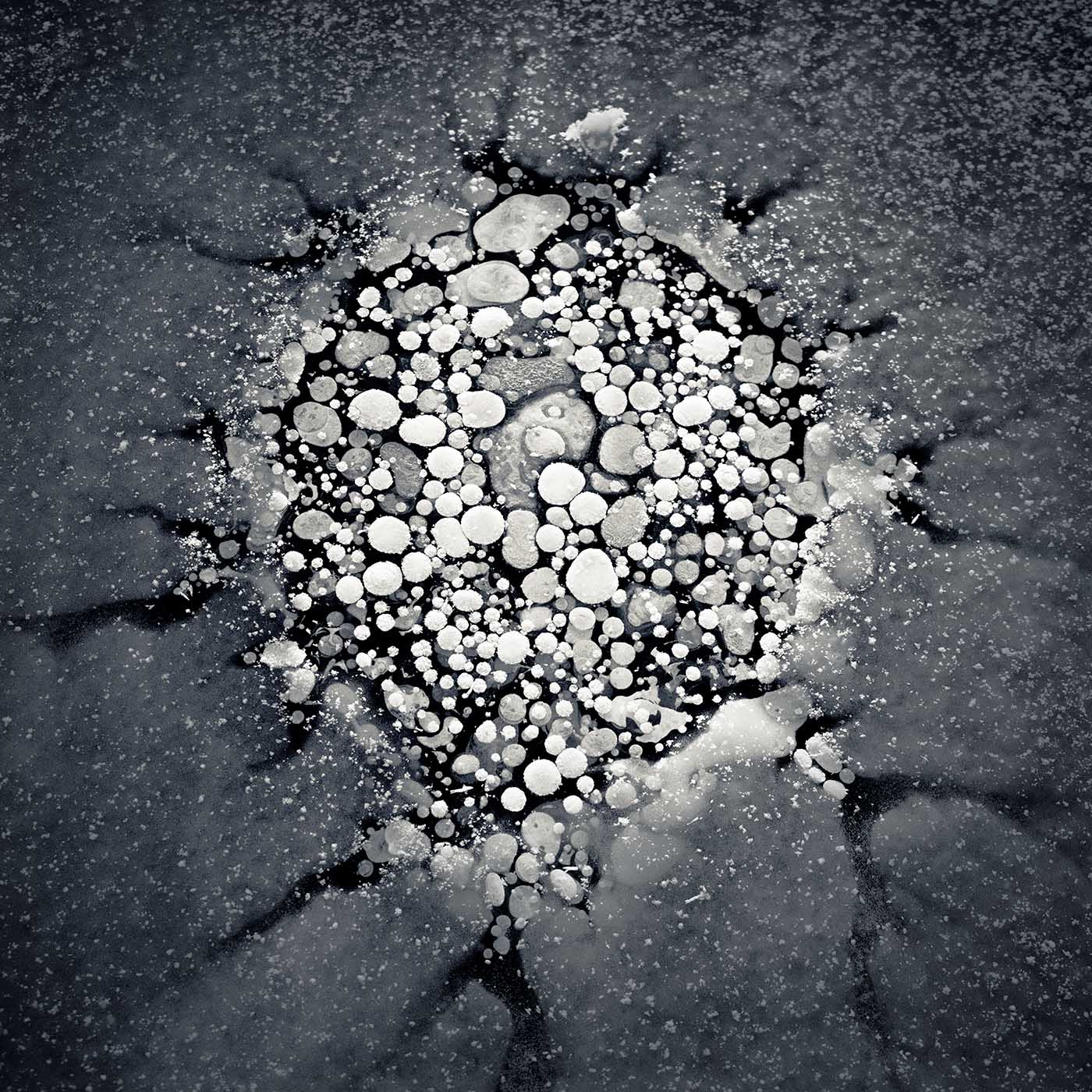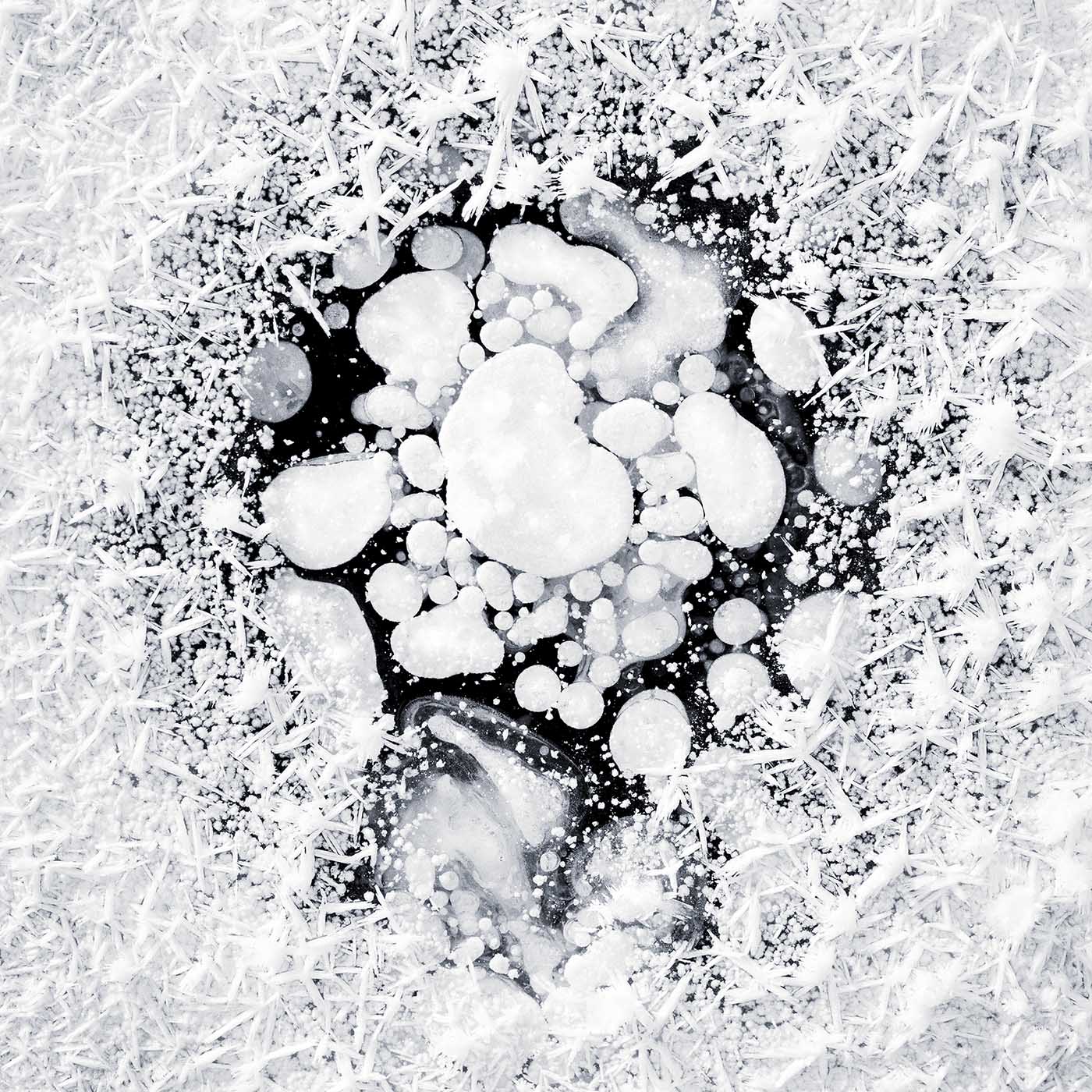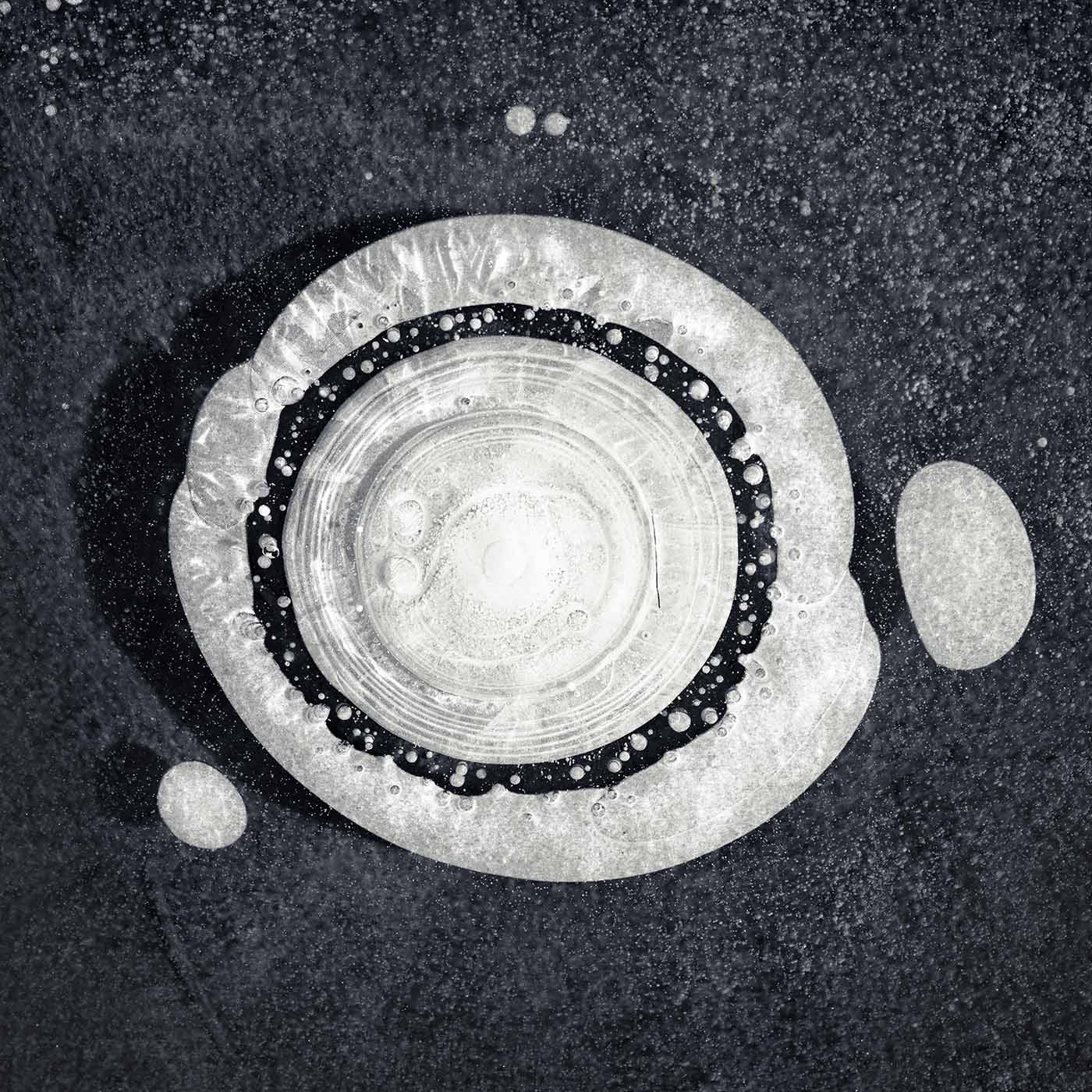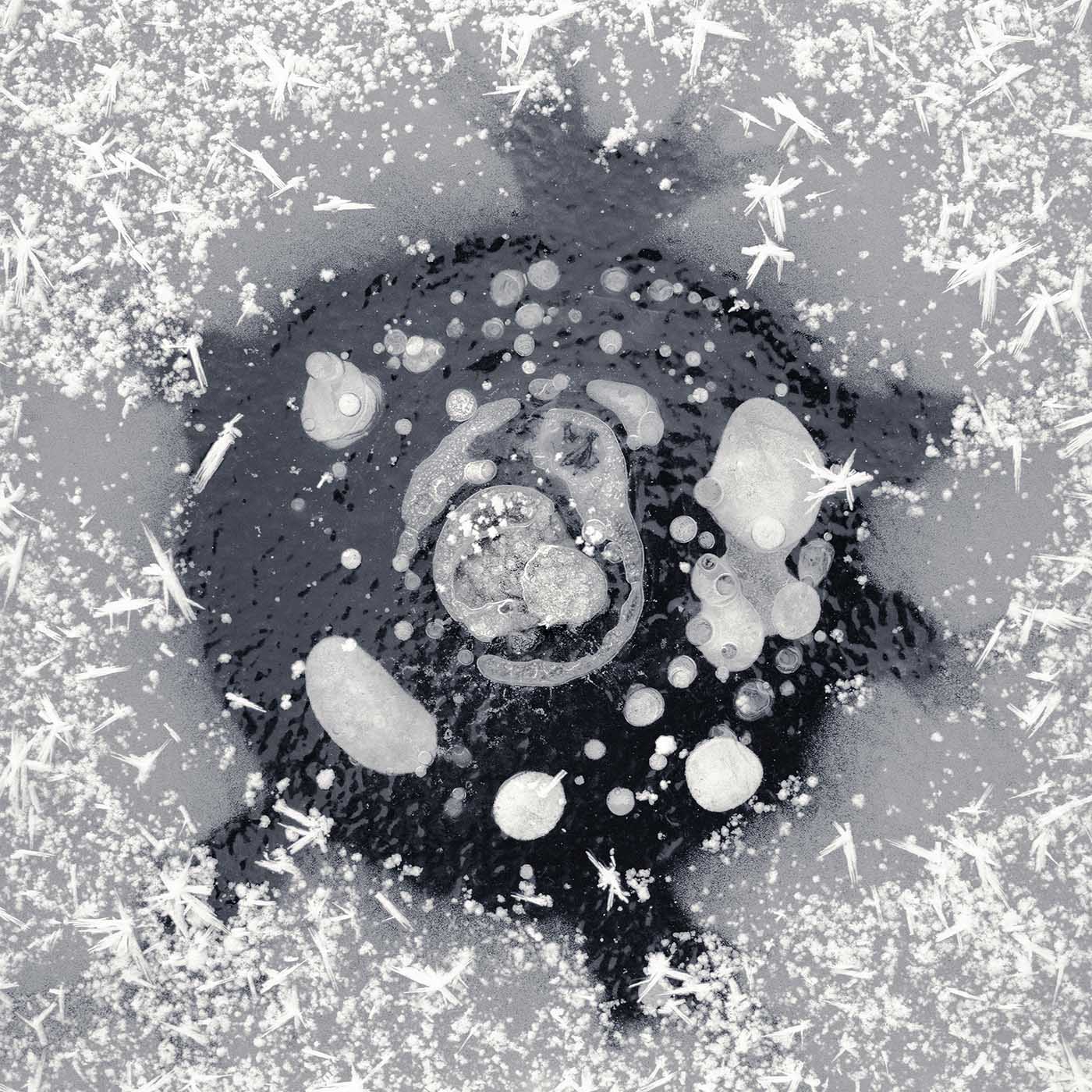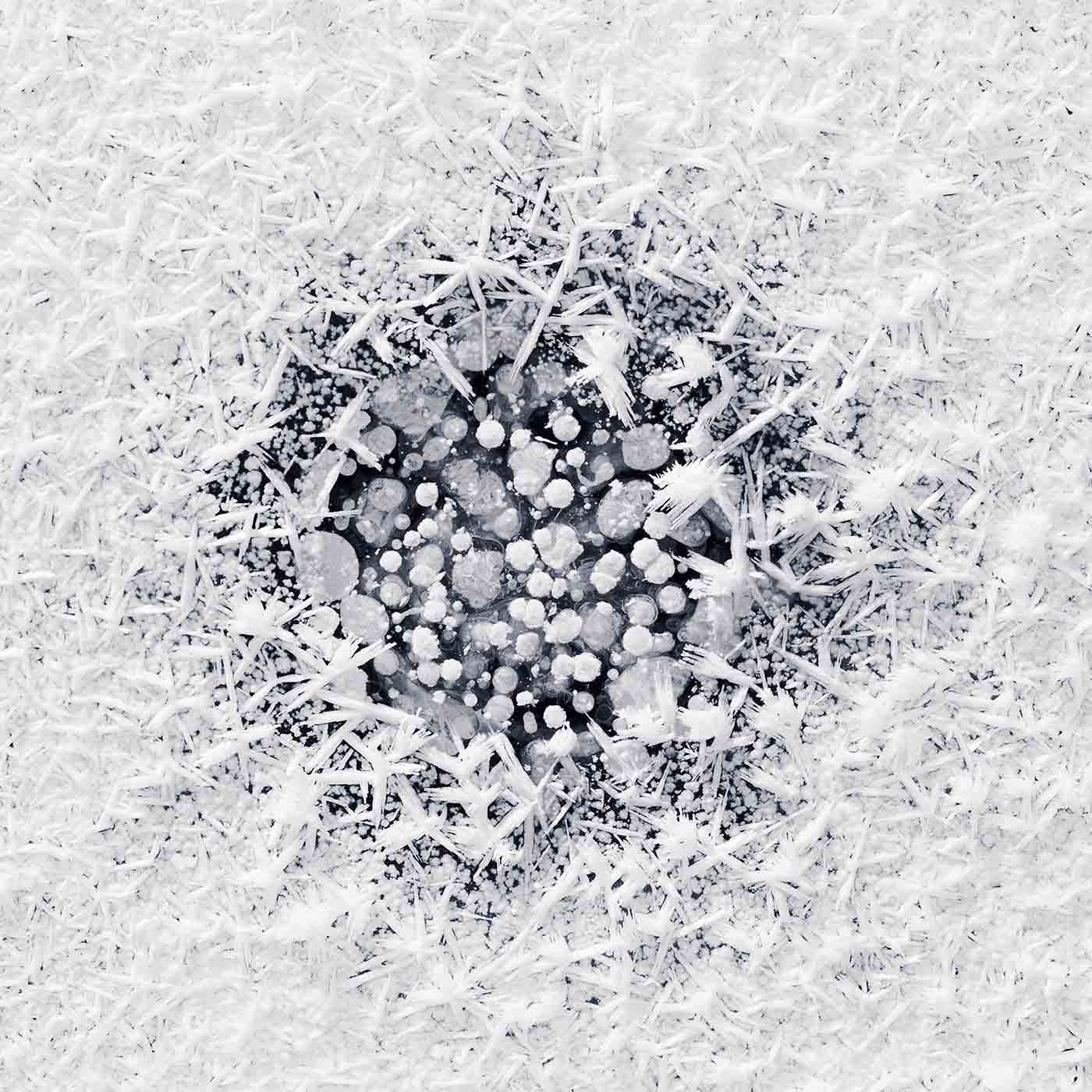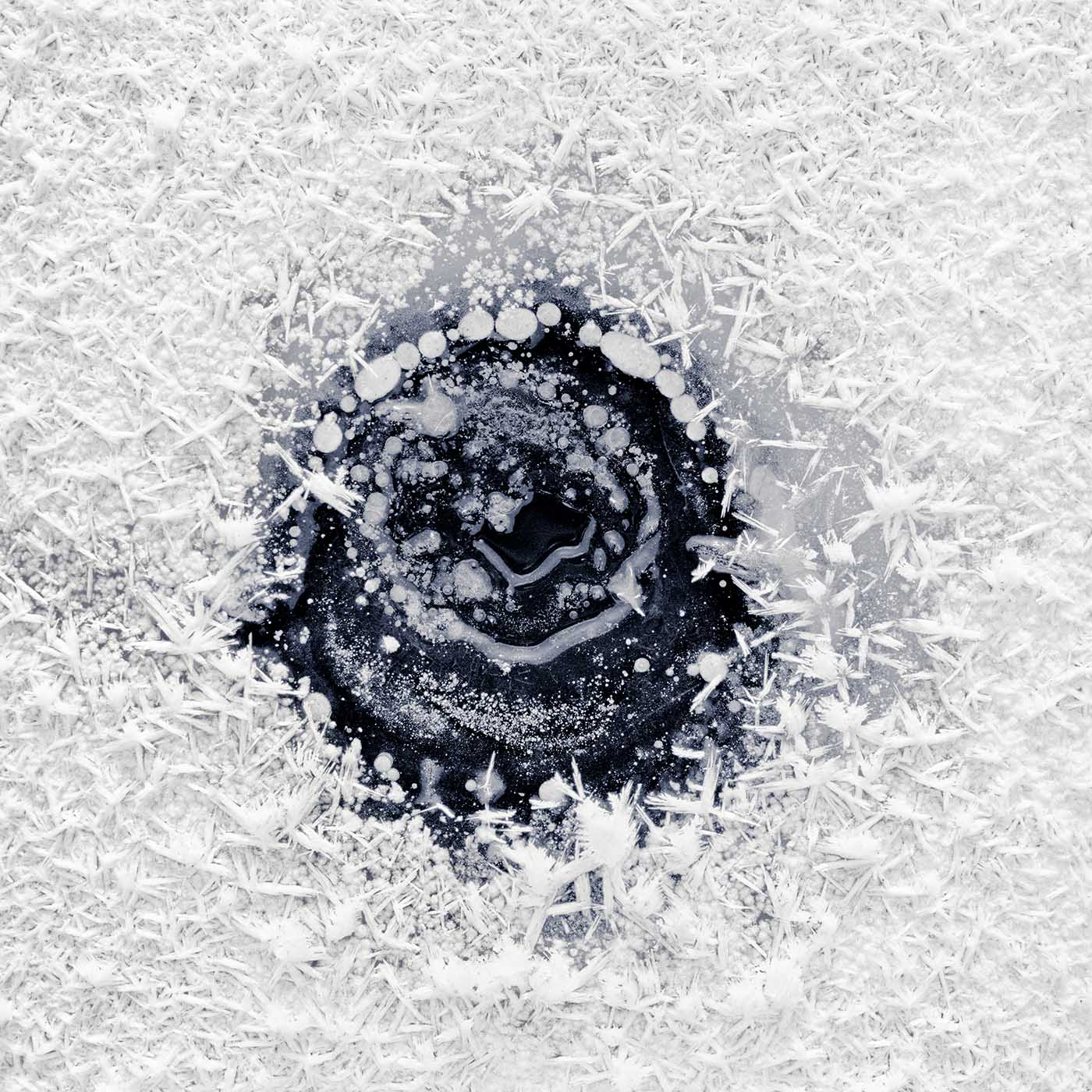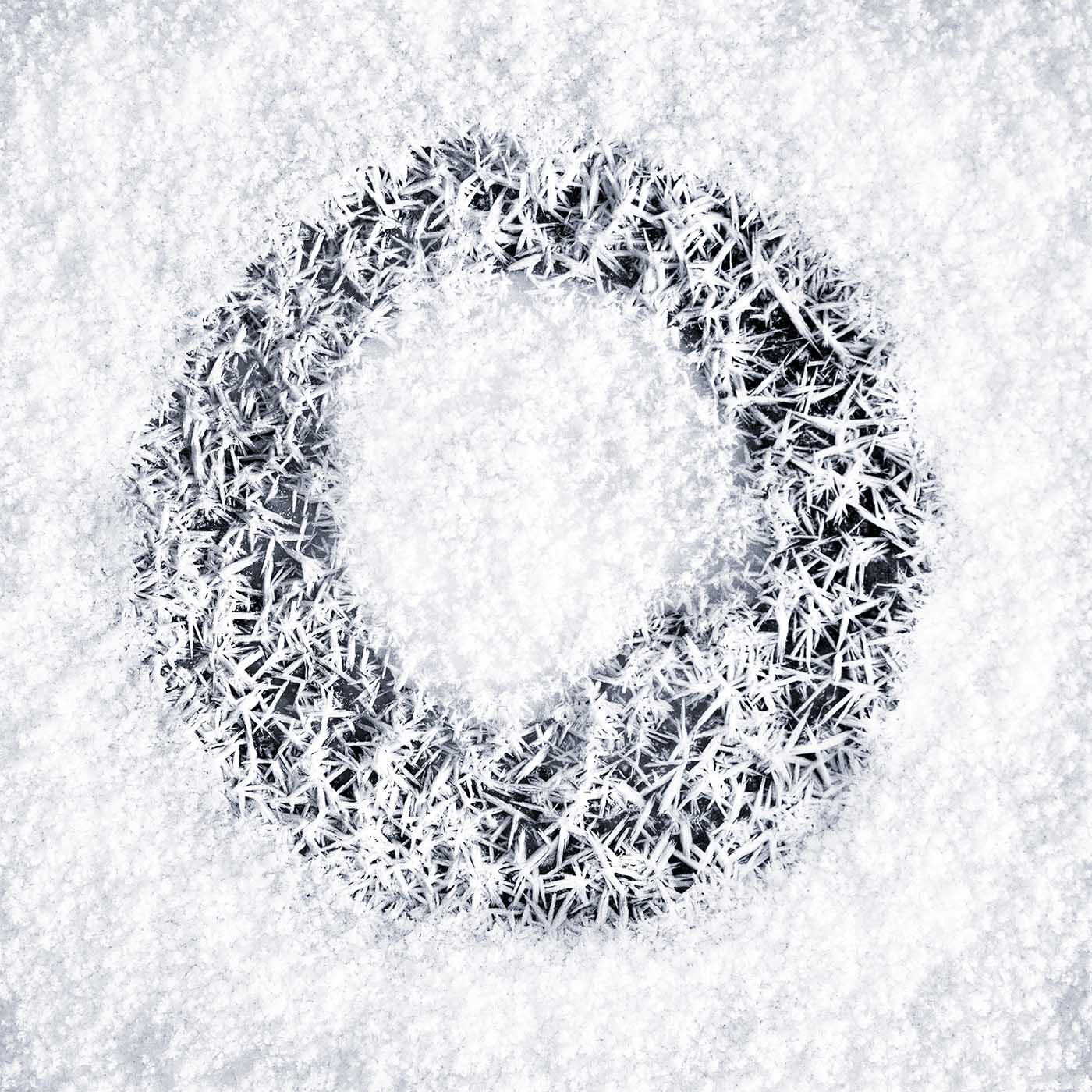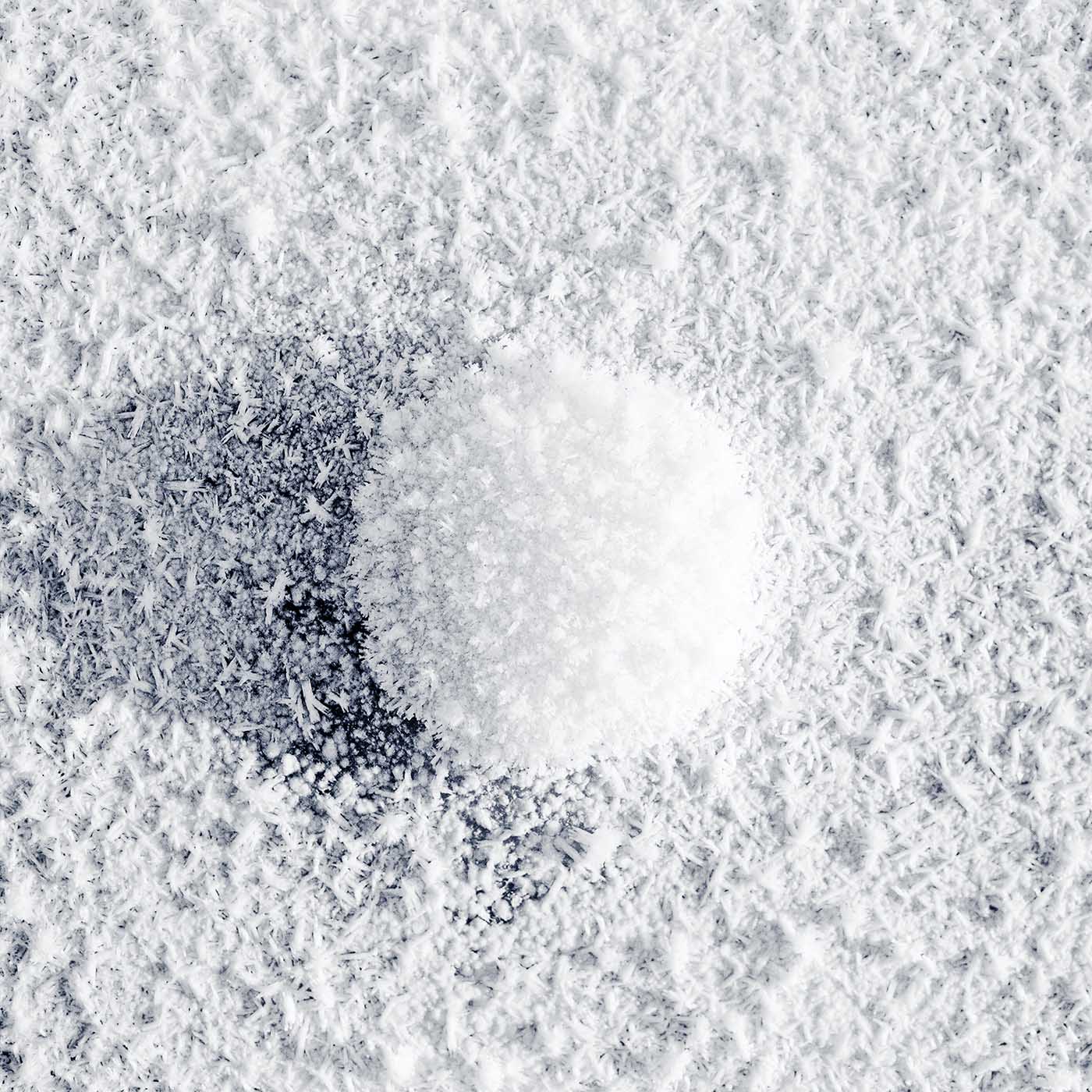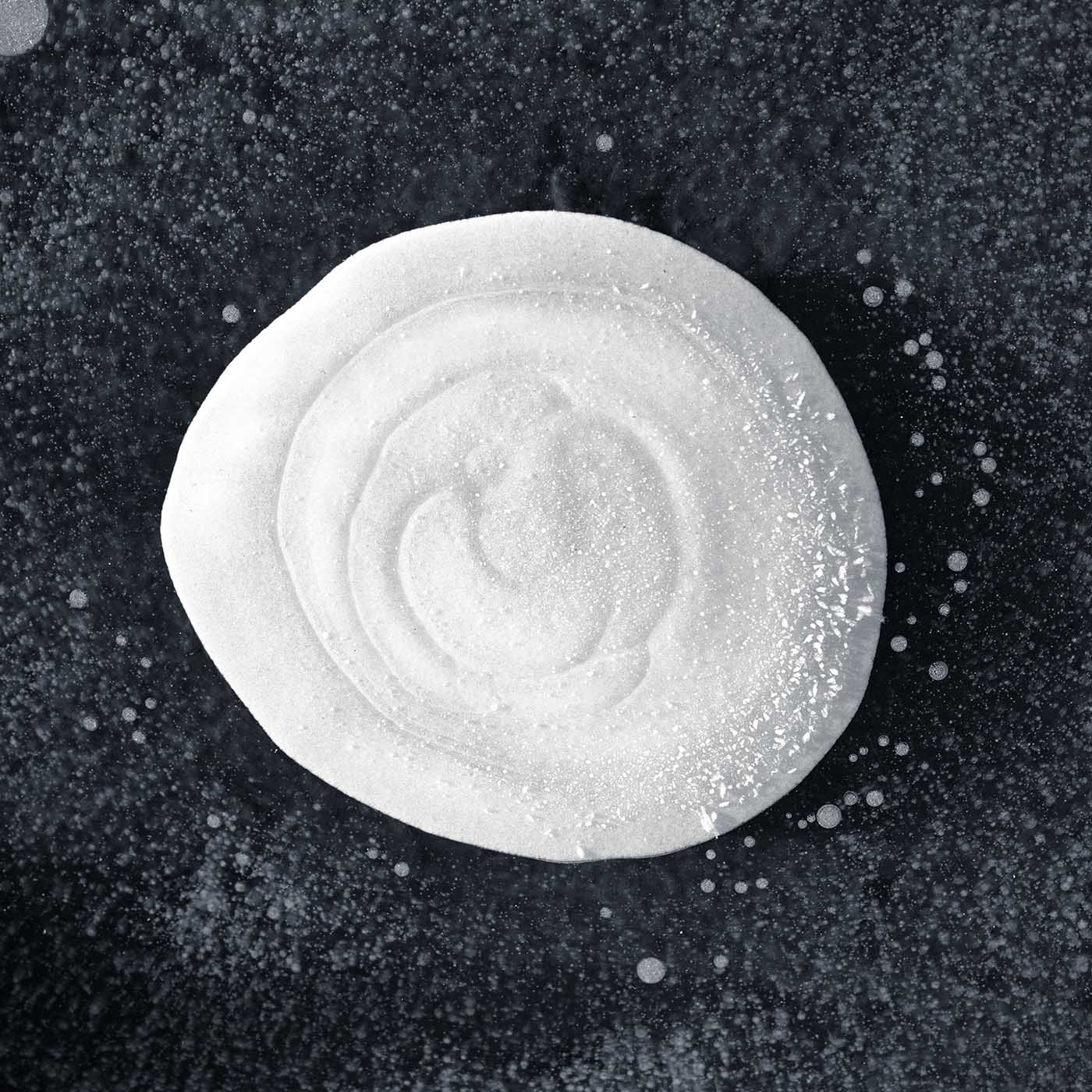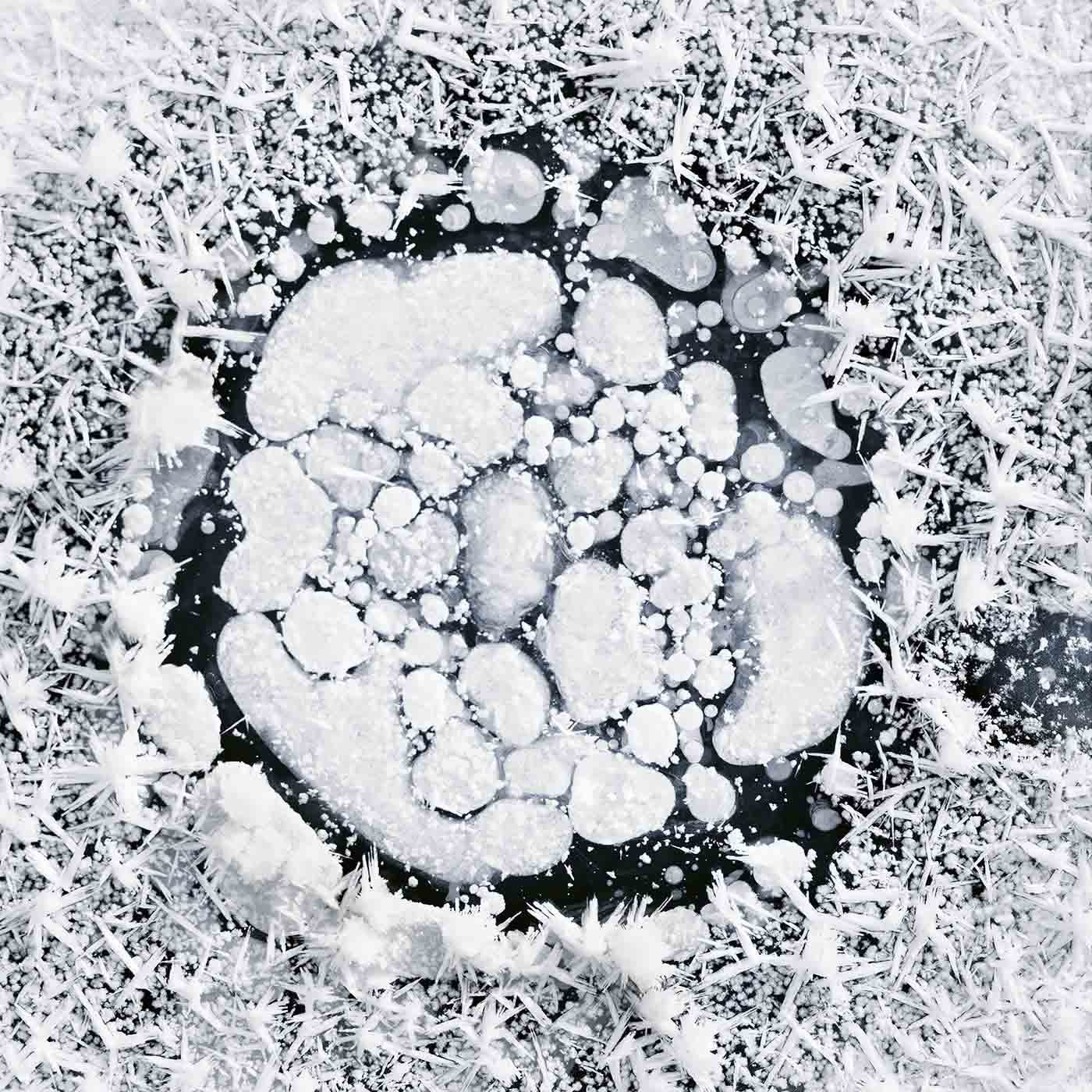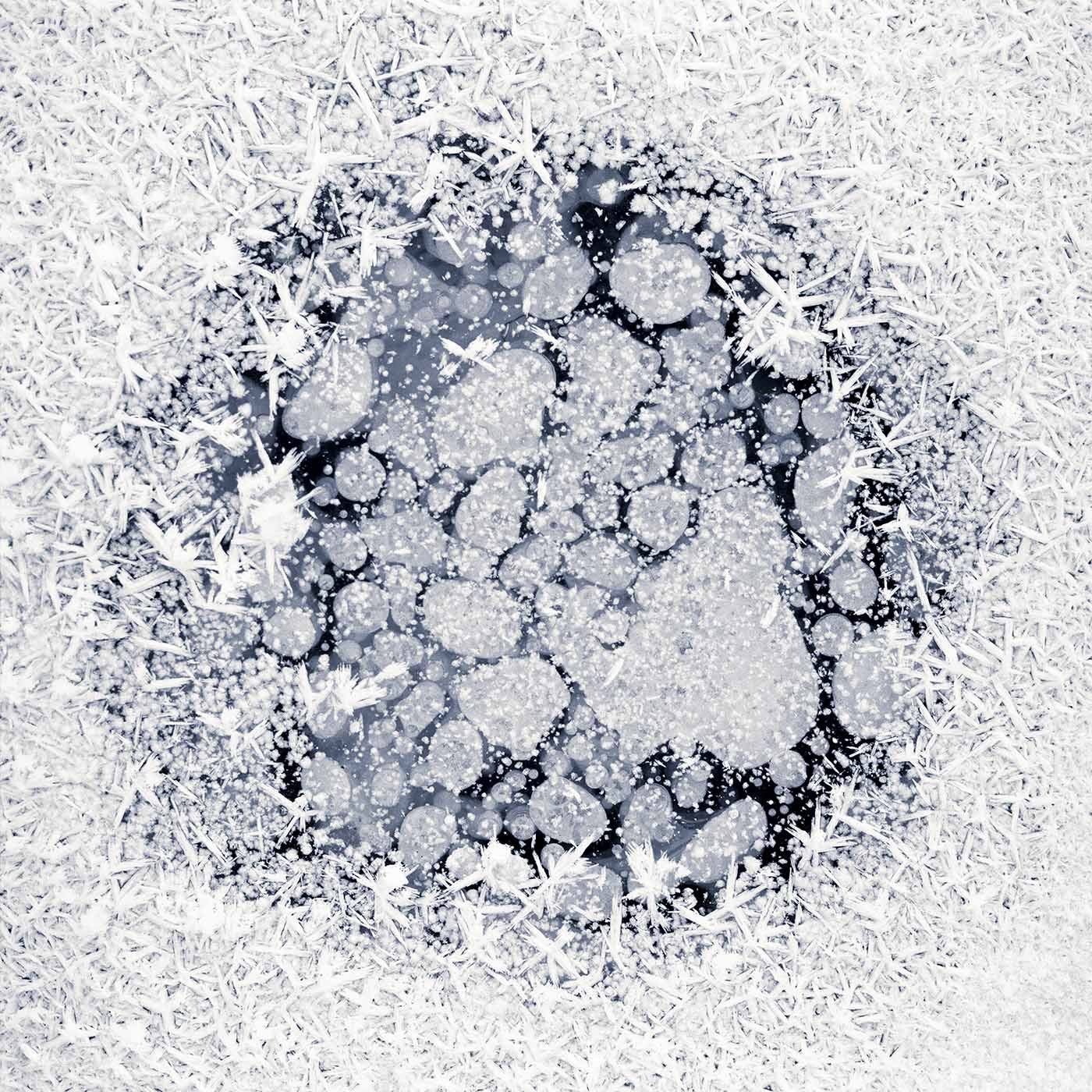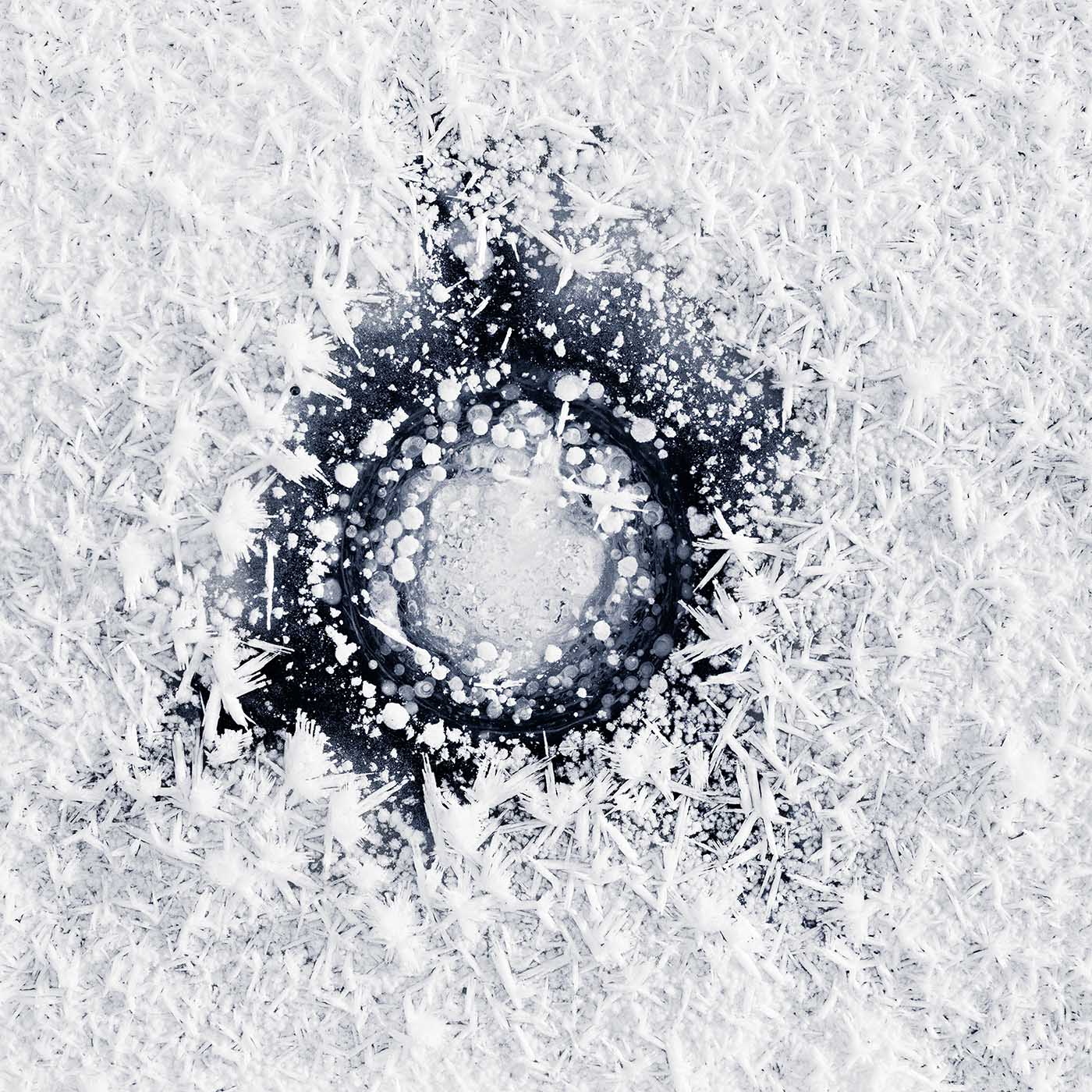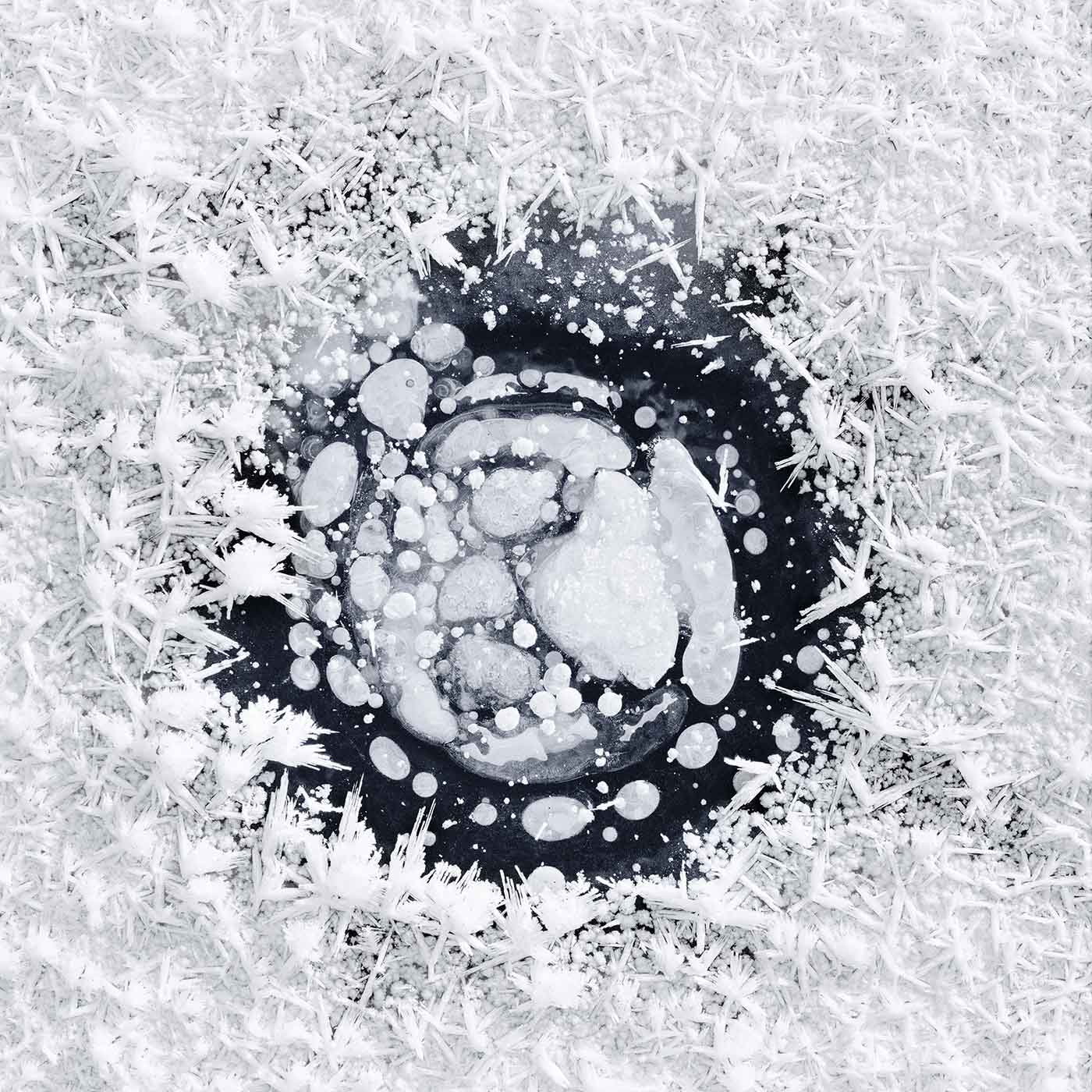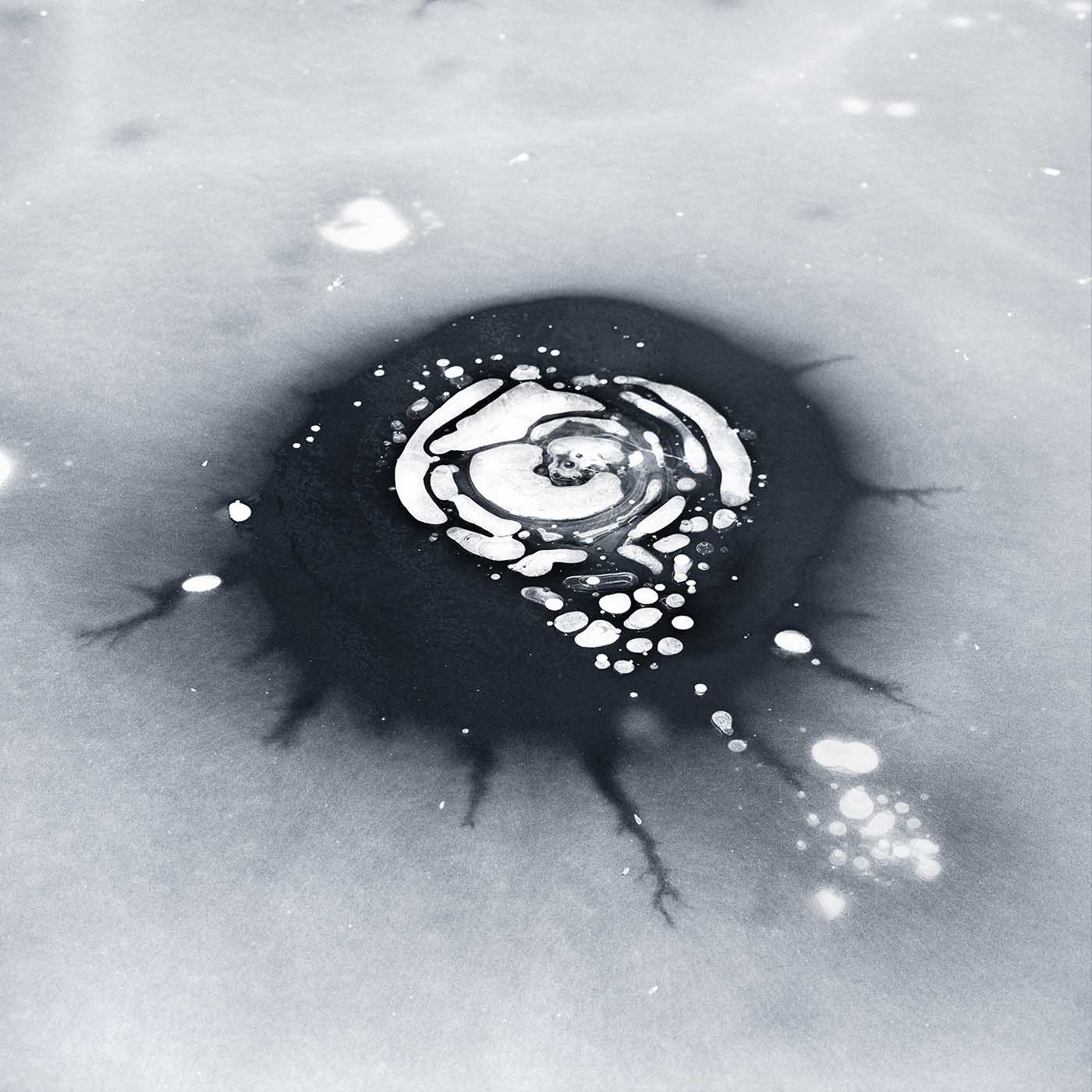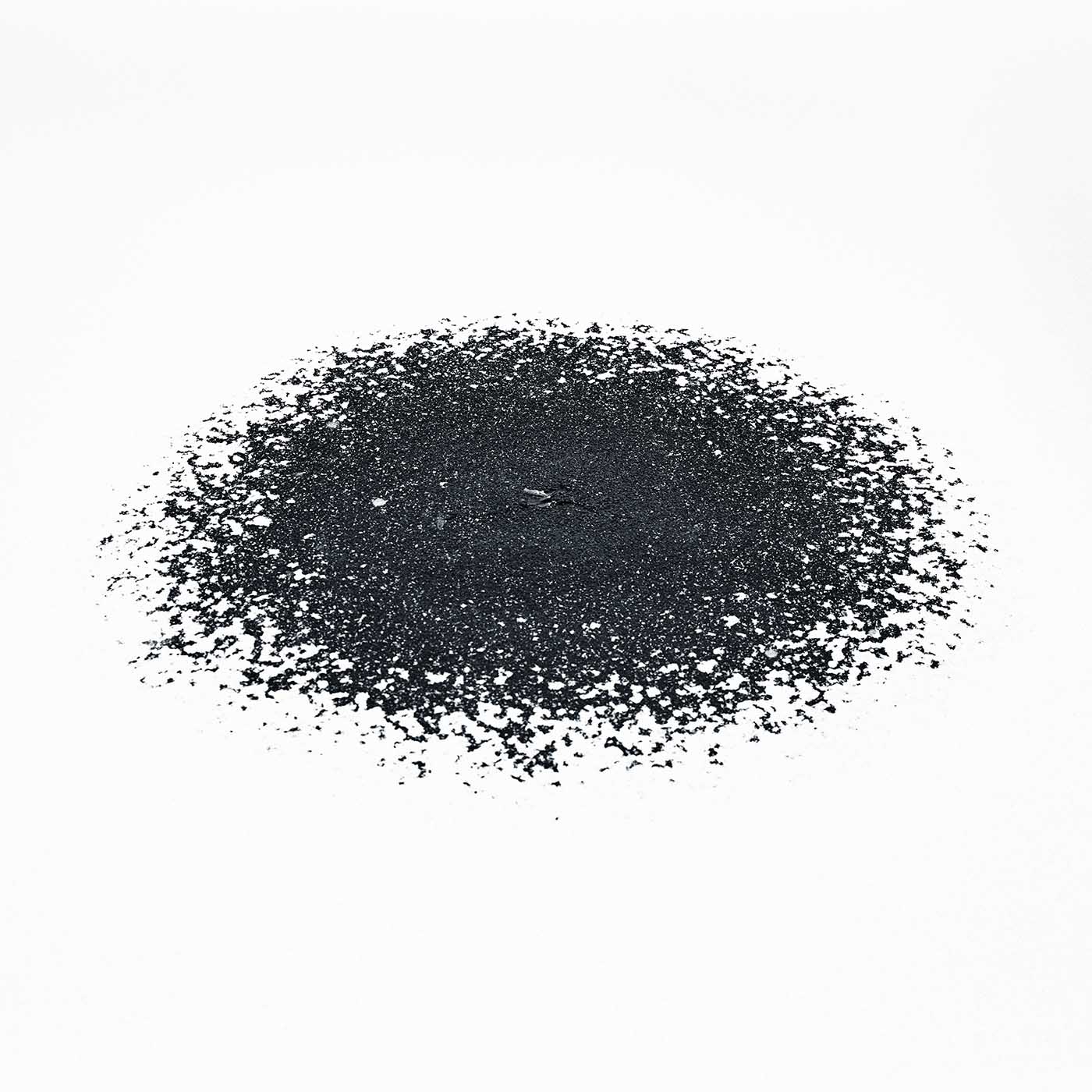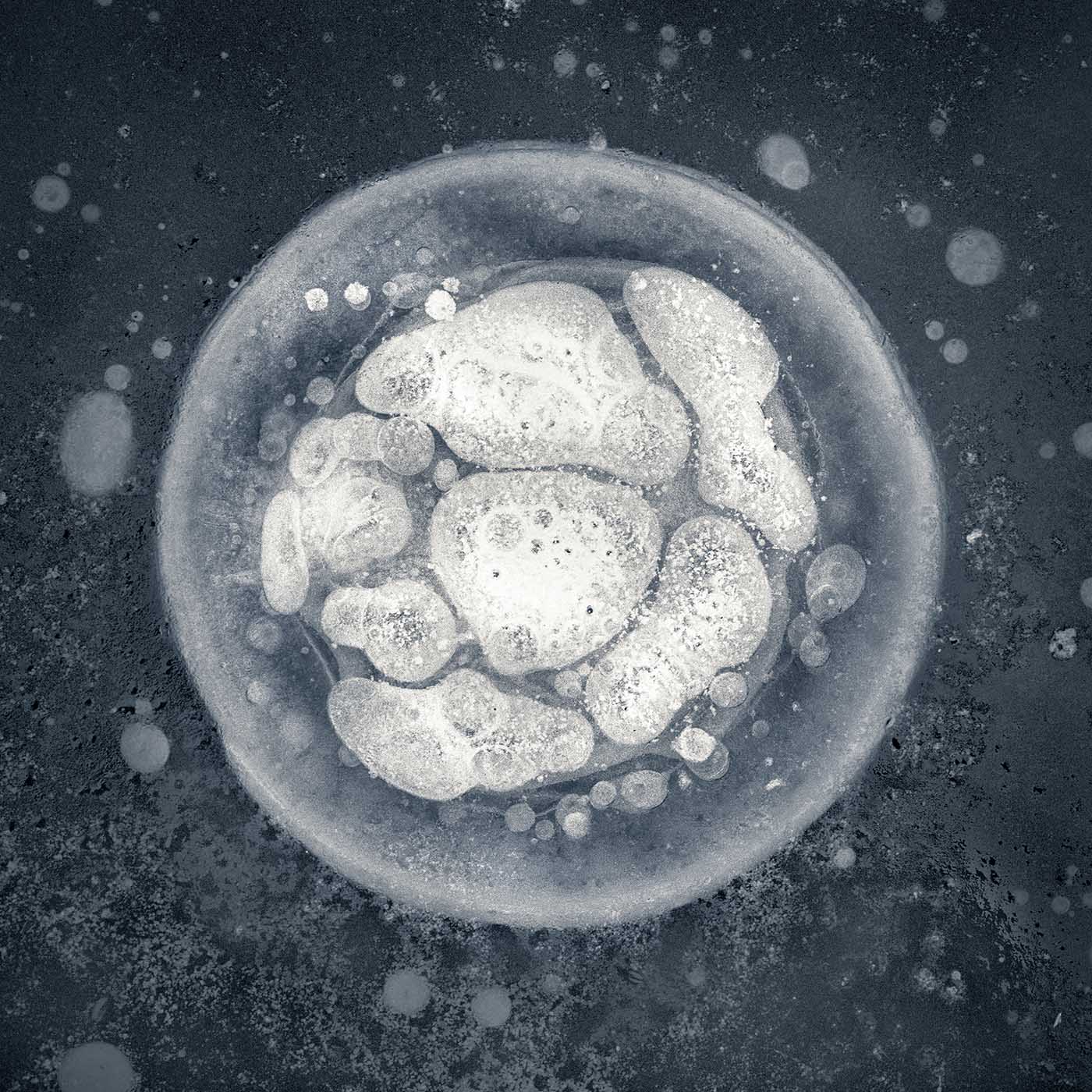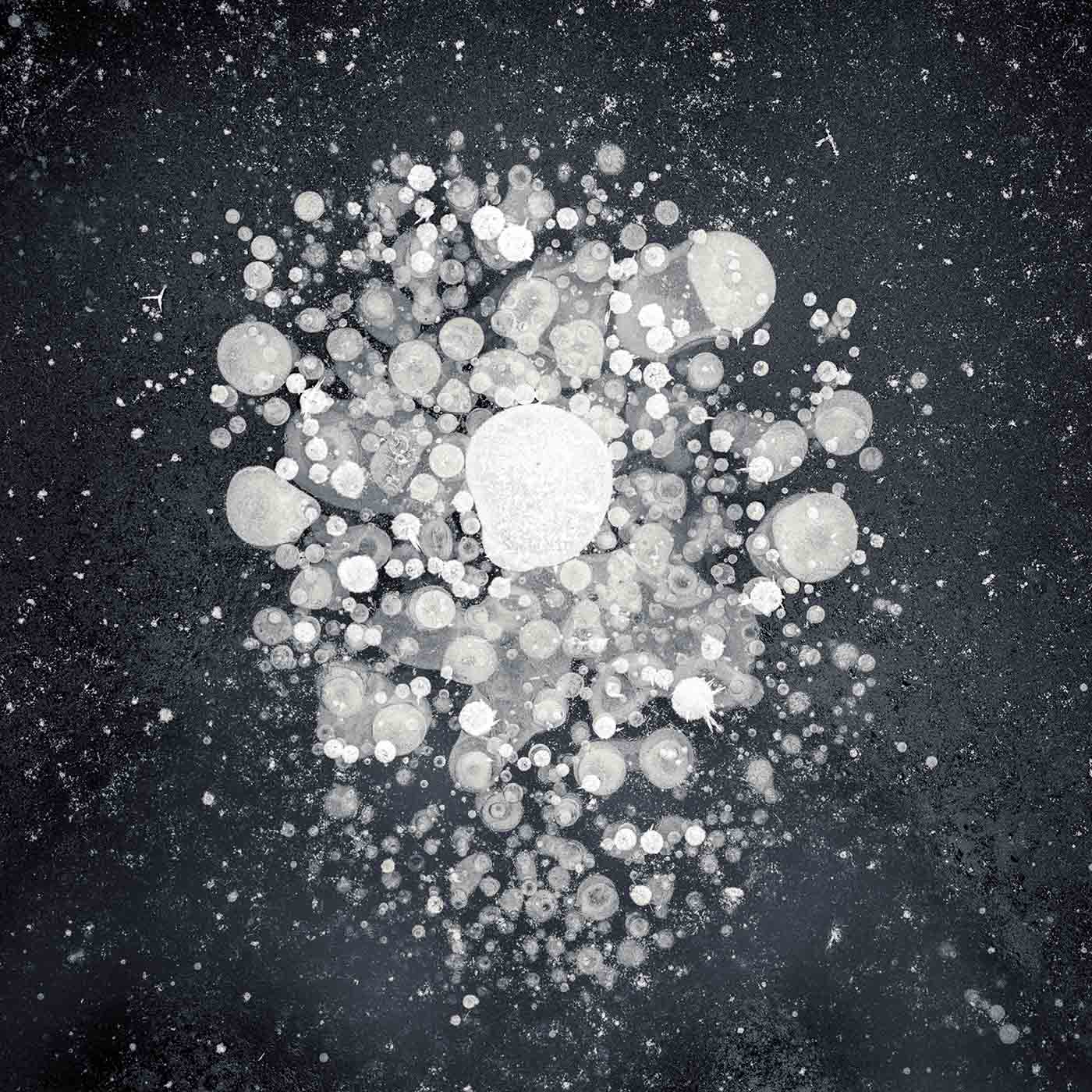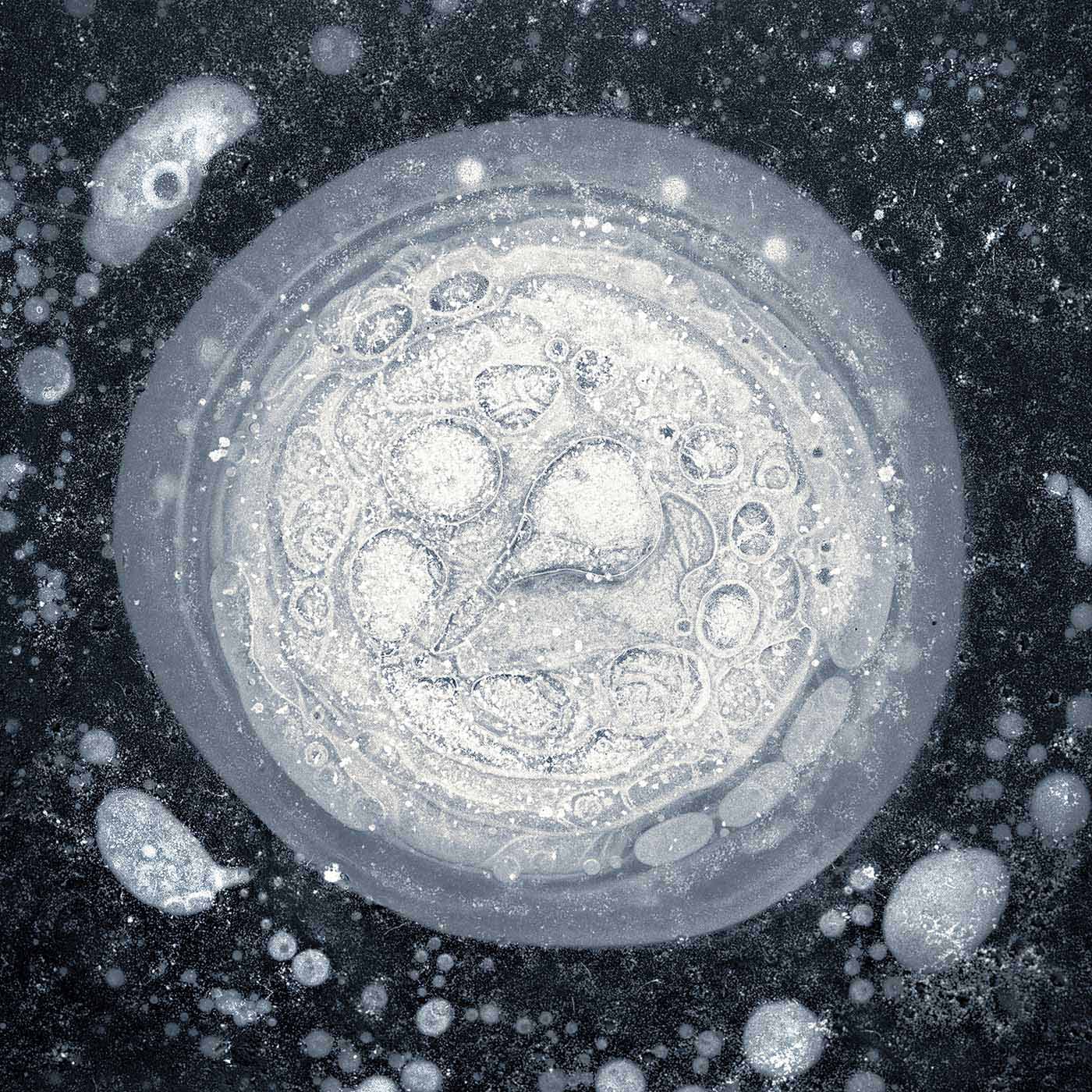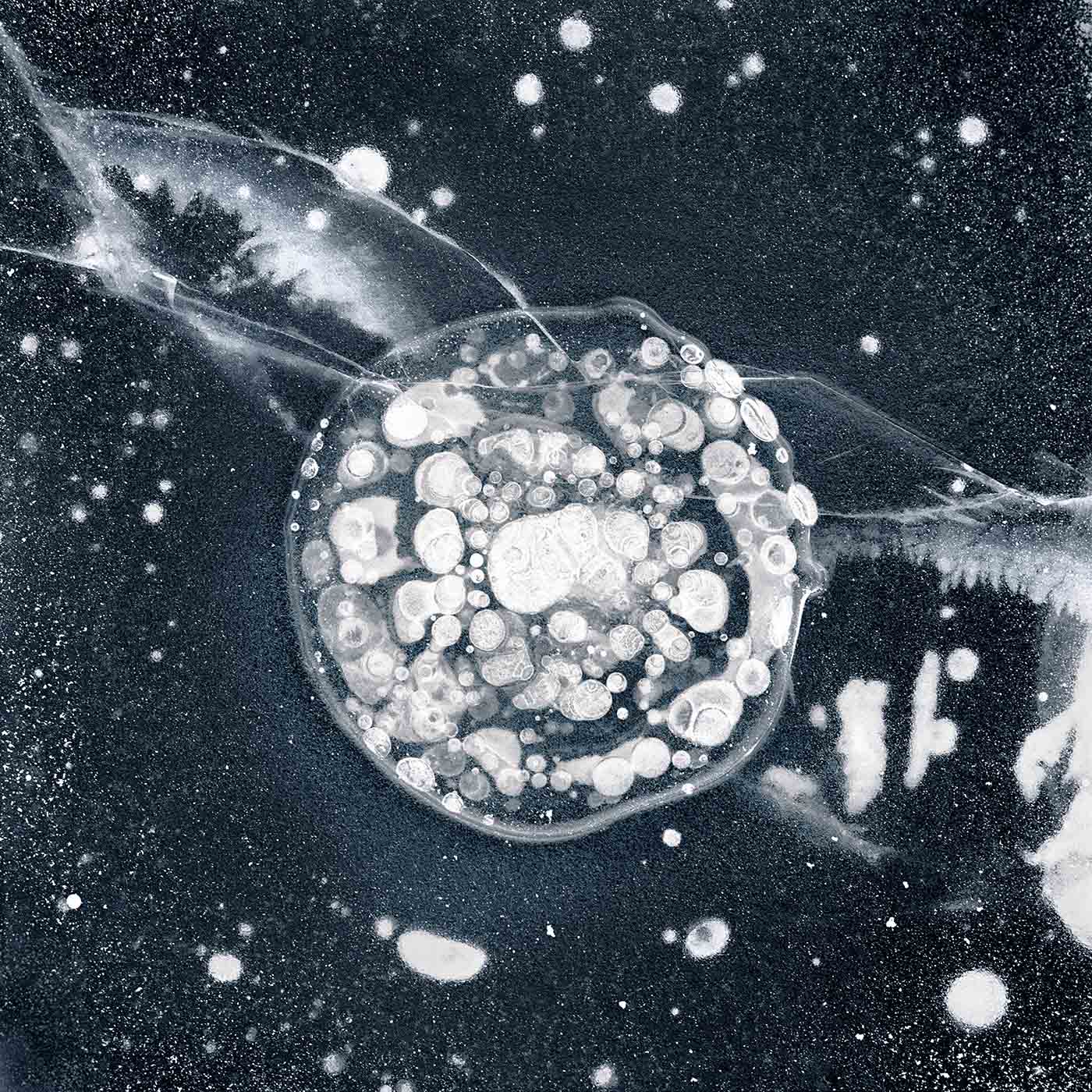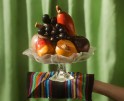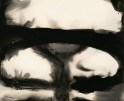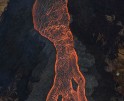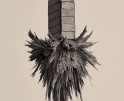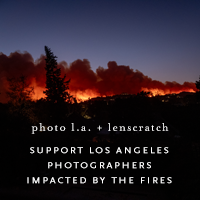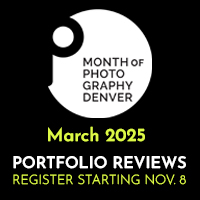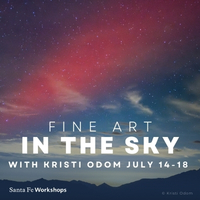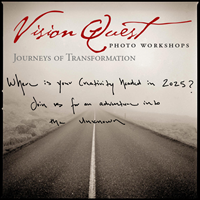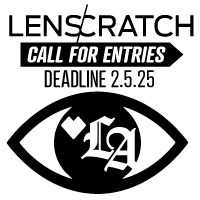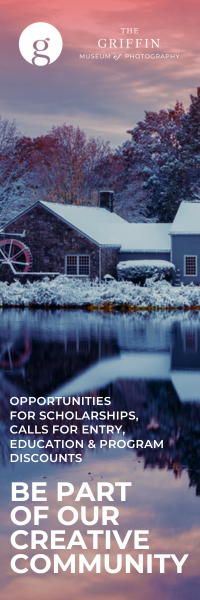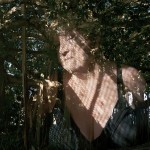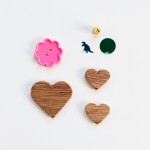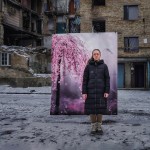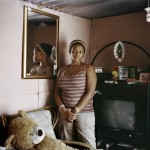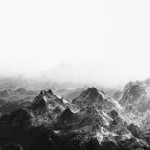CENTER’s Project Launch Juror’s Choice Award: Ryota Kajita
Ryota Kajita received CENTER’s Project Launch Juror’s Choice Award from Mazie Harris, Assistant Curator, Department of Photographs, J. Paul Getty Museum, CA. His project, Ice Formations, “captures ice patterns appearing on ponds, lakes and river in the beginning of winter around Fairbanks, Alaska”. Mazie M, Harris’ statement follows.
The Project Launch Juror’s Choice Award is granted to an outstanding photographer working on a fine art series or documentary project. The grant includes a cash award to help complete or disseminate the works, as well as providing a platform for exposure and professional development opportunities.This grant is awarded to complete or nearly completed projects that would benefit from the grant award package. It requires signature of a contract to participate in an exhibition during Review Santa Fe.
Mazie M. Harris is an Assistant Curator in the J. Paul Getty Museum, Los Angeles, where she specializes in American photography. She has worked with photography collections at the Davis Museum at Wellesley College; the Museum of Art at the Rhode Island School of Design; the Metropolitan Museum of Art; the National Gallery of Art; the Center for Creative Photography; and the Harvard Art Museums.
Being a photographer comes with responsibilities: an obligation to look carefully at the world and a duty to help other people to see it anew. That can mean offering fresh perspective on an often overlooked detail of daily life. Or it can mean providing a glimpse into a community to which we might not normally have access. It’s not easy to hold attention these days, as images flow by so quickly with the simple swipe of a finger across a screen, but many of the photographers we reviewed took their responsibilities seriously. Several were especially adept, wielding tried and true tools—careful selection of subjects, thoughtful framing, tonal range—to urge more careful consideration of today’s most pressing concerns: vanishing ways of life, the legacies of the past, environmental degradation, identity politics, systemic inequalities. The photographers to which I was particularly drawn didn’t just point and shoot but attentively composed, edited, and sequenced their work. They didn’t merely take photographs, they made them.
Many of the more elliptical images, those that addressed contemporary concerns indirectly, were particularly arresting. Some of the projects I found most engaging juxtaposed or layered images, creating complicated visual fields that required time to navigate and to try to unpack. I appreciated the chance for different views of otherwise well-rehearsed relationships with nature, with history, with the built environment, with our bodies, and with each other.
In their statements, several photographers referenced the difficulties of making their work. The sheer number of applicants is testimony of artistic perseverance in the face of logistical, physical, emotional, and financial complications. It’s heartening. Actually, it’s more than that. It demonstrates the power of photographs to raise awareness, to spark laughter, to foster empathy, and to stimulate dialogue. We’re sorely in need of each lately.
My juror pick is Ice Formations by Ryota Kajita. The series, made with a medium format camera, registers ice patterns in Alaskan waterways with mesmerizing detail. Fantastic abstractions, the photographs address global warming by evoking a more epic cosmology. They offer the hopeful reminder that sometimes fractures are the start of new, stronger formations.
Ryota Kaji Kajita is originally from Japan, completed his MFA degree in photography at the University of Alaska Fairbanks, worked at the
University of Alaska Museum of the North, and taught at the Joshibi University of Art and Design in Japan. His photographs have been exhibited in Alaska’s Rarefied Light (2012, 2013 & 2015), The Aesthetica Art Prize (2012 & 2013), Aperture Summer Open (2014), Geo-Cosmos Content Contest (2014) of The National Museum of Emerging Science and Innovation, FotoFilmic17 Winter Shortlist Show (2017) and other shows.
His photography series of “Ice Formation” is featured in the magazine “Photo Technique” (November/December 2012), “WIRED.com” (August 2015), “城市画報 -CITY ZINE-” (January/Februray 2016), and is represented by Susan Spiritus Gallery in Nrewport Beach, California. His work became part of the Seattle Office of Arts & Cultural Affaires and The Alaska Contemporary Art Bank, and was selected for Blue Sky 2013 Pacific Northwest Photography Viewing Drawers Program (“Drawers”) of the Oregon Center.
He has traveled to more than 50 remote Alaska villages by a two-seat, light aircraft and snowmobile for scientific research. He loves travelling, backpacking and cross-country skiing with a medium format film camera and always responds to the beauty of nature.
Ice Formations
This series, Ice Formations, captures ice patterns appearing on ponds, lakes and river in the beginning of winter around Fairbanks, Alaska. The photographs were taken over the past seven years with a medium format film camera, which allows me to capture delicate details of the ice. Many of these are frozen bubbles of gases like methane or carbon dioxide trapped under ice. When lake, swamp and river water freezes, it turns into ice slowly from the surface and traps the gases. The bubbles create unique geometric patterns. The actual diameter of the ice formations in my series is about 10-40 inches (25-100 cm). Because methane gas is considered as one of the fundamental causes of greenhouse effects, scientists in Alaska are researching these frozen bubbles in relation to the global climate change. The water also shows other beautiful patterns in fall and winter. Snow falls on lakes and rivers, freezes, melts, refreezes and creates unique organic patterns on ice. The vapor in the air freezes as frost and grows intricate ice crystals. It’s amazing to me that the wondrous formations appear quietly on surface of frozen water for no one: they are not for humans or other creatures. It makes me think wonders of nature and respect the environment. We see various forms of water throughout the seasons in Alaska. I hope that the images of dynamic changes of water captured in my series would help viewers feel connected to nature, and inspire their curiosity to natural phenomena and invite them to explore the beauty in the details of the organic patterns. In our everyday life, there is beauty and wonder. However, many are subtle, ephemeral or too small to be noticed. Photography enables me to pay attention to those moments and subjects, take more time to observe them, examine from different angles and understand them more deeply. Each image on film is scanned, digitally split-toned and printed 20″x20″ size on Archival Pigment Print.
Posts on Lenscratch may not be reproduced without the permission of the Lenscratch staff and the photographer.
Recommended
-
Dominique Muñoz: Denis Roussel Annual FellowshipDecember 30th, 2024
-
elin o’Hara slavick: Art + Science Competition Honorable MentionDecember 21st, 2024
-
Leslie Gleim: Art + Science Competition Honorable MentionDecember 20th, 2024
-
Zac Henderson: Art + Science Competition Third Place WinnerDecember 18th, 2024
-
Julie Anand & Damon Sauer: Art + Science Competition Second Place WinnersDecember 17th, 2024

